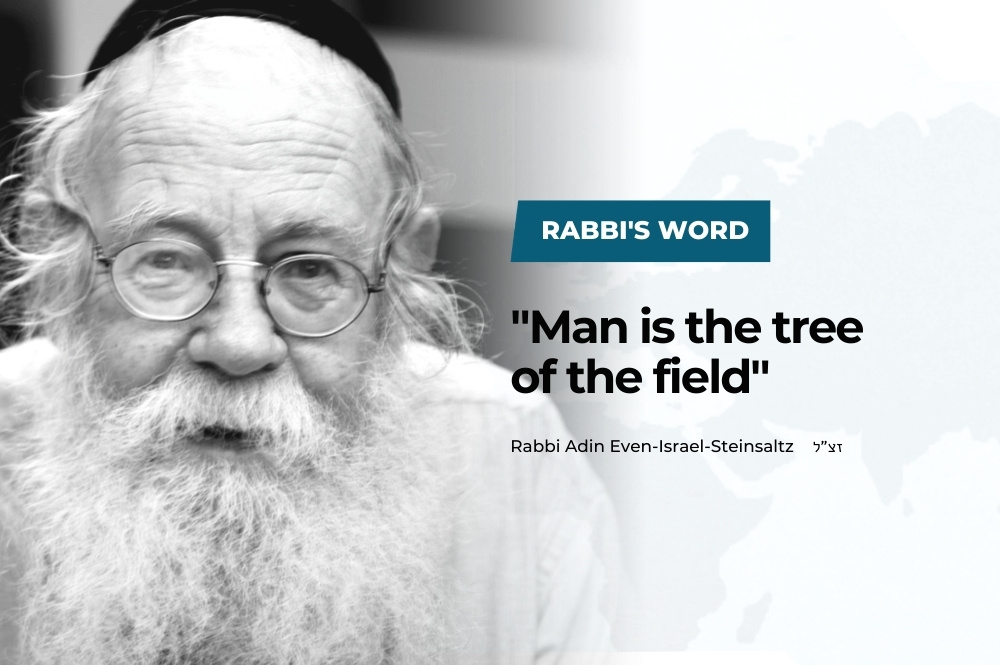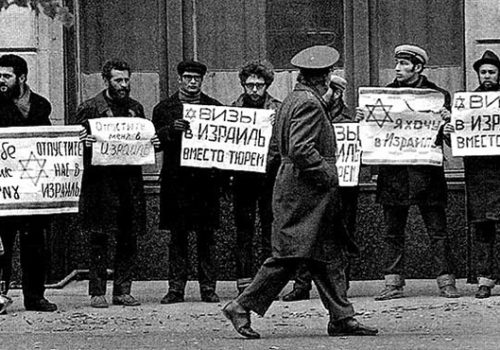
We continue cooperation with the institute of Rabbi Adin Even-Israel Steinsaltz and publish specially prepared material for the communities of the EAJC members. We publish this article after the death of Rabbi Steinsaltz, one of the greatest philosophers of our generation, a scientist and a Hasid. Let his memory be blessed.
Many verses indicate that there is a connection between the tree and man, often comparing them to one another: “For the [existence of] man is the tree of the field” (Deuteronomy 20:19; see Sifre and Ibn Ezra loc. cit.), “He is like a tree planted beside streams of water,” (Psalms 1:3), “He will be like a lone tree in the desert” (Jeremiah 17:6). It appears, then, that much can be learned about man, his soul, and his manner of worship by observing trees and their growth. Tu BiShevat, the New Year for the trees, when we focus on our bond with the Land of Israel and our love for it and its plant life, is an opportunity to focus on learning from the trees (this year comes on January 27 with the release of the stars).
One element of comparison between trees and man relates to the tree’s connection to the earth. Just as the tree grows in the earth and is like one of its creations, man similarly has “soil” from which he draws sustenance. And just as a tree that is detached from the earth will surely die, so, too, man – the individual as well as the community – cannot survive in detachment, as a self-contained creature.
One of the basic sources of modern man’s suffering is his lack of social belonging. The personal loneliness that many feel and the general sense of alienation that people experience nowadays are expressions of the fact that man has ceased to be “planted in the earth.”
Today, most social affiliation is based on practical need, not meaningful values. People join groups to protect their common interests, but this is almost like professional affiliation; they do not feel that this is their home, that there is a place in which they are planted. The social unit comes together as a contingency, to build mutual defensive and offensive mechanisms, but no more than that. Many people are like nomads who incidentally arrive at a certain place, but there is no meaningful tie that binds them to it. They feel no special relationship with their place; and therefore, are easily uprooted. In a certain sense, modern people are like plastic decorative plants, which are lifeless and therefore can “flower” without any need of the earth.
This reality results from the aspiration to the ideal of personal freedom; the individual wishes to detach himself from any social bond and endeavors to turn himself into the essence and foundation of all existence. The insistence on the right to be an independent individualist allows one to adapt everywhere equally, because in any case one does not truly belong anywhere.
Verses in Psalms describe the tzaddik as a tree planted in excellent soil, a comely tree that bears good fruit: “The righteous bloom like a date-palm, they thrive like a cedar in Lebanon. Planted in the House of God, they flourish in the courts of our Lord;” (Psalms 92:13). A person who is connected to a place and has a positive relationship and a commitment to his surroundings has a chance to develop, blossom, and be fruitful.
By contrast, the wicked person is cursed that he will be “like tumbleweed, like straw before the wind”(Ibid. 83:14). He will be like a dry shrub that is uprooted and driven by the wind from place to place. One whose life is not built upon a lasting root feels that relationships and commitments shackle, imprison, and suffocate him. Such a person chooses to live like a hewn tree – a life that draws no nourishment from any source, does not develop in any direction, and cannot truly be termed life at all.
The same phenomenon is discernible also on a larger historical plane as well, in particular in the great rebellions within Jewish society during the last few generations. Part of the social essence of the Jewish People was always the sense that a Jew is planted in ground from which he draws sustenance and on which he tries to build. Even when a process of renewal unfolds, there is never transformation into a completely new creature; a part of the past is always preserved. An analogy to this may be drawn from the rings on a tree trunk, which attest that despite all the renewal and growth of new branches and leaves, the tree has not replaced its essential self of old, but has only added new layers to it.
During the last few generations, the Jewish People has undergone a revolution of detachment, based on the conception that the past is repulsive and shameful. For ideological and practical reasons, people severed all connection with their past, as a result, their children had no ability to get to know their larger family and identify with their roots. Some intentionally cut off their connection with the past, while others were subjected to this process without their knowledge, at times even under duress or by deceit.
Thus was created a disengaged and rootless reality, and this is the reason many today have a sense of displacement from their past. This is a major reason for the inability of people to identify with their own Judaism.
In order to fill the void created as a result of this great detachment, one must make a personal effort to find soil from which to draw sustenance – a kind of home and homeland. There is no choice but to search for, or at least try to reconstruct, a place and an atmosphere from which one can draw sustenance and thereby grow.

